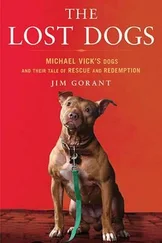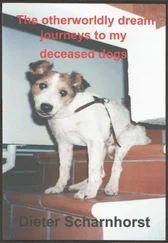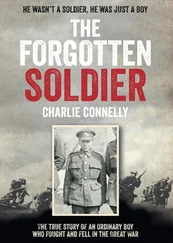The list of jobs for these dual-purpose dogs is blissfully short compared with the alphabet soup that makes up their single-purpose counterparts’ job list. Some say it’s best for a dog to have just one job and specialize in it, but most handlers think dual-purpose dogs work just fine.
PEDD (patrol explosive detector dog)—PEDDs are the backbone of the Department of Defense’s war-dog program. The dogs are used by MPs and other law enforcement across all services. In addition to sniffing out bombs and doing patrol work, these dogs have some basic scouting abilities.
PNDD (patrol narcotics detector dog)—These dogs are the drug-sniffing counterparts of PEDDs and are also used in the army, the navy, the air force, and the marines.
Multi-purpose caninesare the Cairos of the military. They’re used by Special Operations personnel. MPC is both a category and a job description. In addition to doing everything PEDDs can do, these super-high-drive dogs can be used in parachute or rappel operations. They sometimes wear waterproof tactical vests, night-vision or infrared cameras, and other highly specialized canine equipment. They’re extremely resilient, environmentally sound, and almost unflappable. As Arod says, “They can do all this and pursue a bad guy through a wall of fire and tear you to pieces if they need to.”
 11
11 
AND THEN THERE’S LARS …
The USS Norfolk is a Los Angeles-class fast-attack submarine reeking of the paint being smoothed onto its surface to keep it black and in stealth mode when deployed. This submarine does serious business.
So why on this hot, sunny July afternoon are people on the dock and on the deck of the sub laughing? “That is hilarious!” chuckles the burly chief of the boat (COB), Senior Chief Machinist Mate Sean Craycraft. Others are smiling and pointing and taking pictures. The source of their mirth? Lars J274, a fifteen-pound Jack Russell terrier, a wiry seaman, and a master of tight spaces.
“Fear the terriers!” cries a sailor, and everyone laughs some more. Dog handler Navy Master-at-Arms Third Class Cameron Frost hasn’t even had Lars for two weeks, but he’s used to his canine partner drawing this kind of jibe, and he has a ready answer. “I’ve already ordered my Coach bag to carry him in.”
Lars was supposed to be a drug dog, but there was a mix-up at dog school, and he got trained as an explosive detector dog (EDD) instead. That suits him fine. He’s a self-confident, assertive dog with a detectable swagger.
Frost joined the navy because more than anything else in the world he wanted to be a dog handler. From early on in his enlistment he cleaned kennels, fed dogs, did whatever work kennel masters needed done, in order to show how badly he wanted to work with dogs.
Three years later his hard work paid off, and he got to attend the handler course at Lackland Air Force Base. He thrived on the rigors of combat training with German shepherds and Belgian Malinois. When he returned to his home base at the naval weapons station in Yorktown, he was assigned to Rokio L241, a patrol-narcotics German shepherd. They soon deployed to Afghanistan and stayed mostly inside the wire at Bagram Airfield during their deployment. Rokio’s accomplishments consisted mainly of finding drugs coming in with the Afghans working on the base. At the end of the tour, Frost and Rokio returned to the United States and Rokio was assigned to another handler.
Frost was not left without a dog, however. About ten days before I met him at Naval Station Norfolk, he had been assigned Lars, who at age seven is something of a veteran in the world of explosives detection. He has a reputation for an excellent nose and a strong drive to do his job.
But Lars will never deploy. He’s just too small. A wrong step with a boot could prove disastrous for him.
The navy uses Jack Russells to sniff out drugs and explosives in ships and submarines. Originally bred to be ratters, these terriers thrive on squeezing into small places. A number of these energetic little dogs are sprinkled at naval bases throughout the U.S., including Pearl Harbor.
Lars and his small comrades are never trained as patrol dogs. When your shoulders are about one foot off the ground, there’s a limit to how much protection you can offer. But don’t tell this to Lars. He may be small in stature, but he’s big in attitude.
“Lars has ‘little-man syndrome.’ Sometimes he can be a real jerk,” Frost says as he hoists him out of his kennel in a navy police SUV and holds him in the crook of his arm. “Don’t try to take his food bowl unless you have a hose, because he will attack you. Even if you stick your boot toward the kennel, if the bowl is in there he will attack the boot. See all these bite marks on my boot? These are all from Lars.”
Getting Lars’s food bowl out of his kennel requires having a hose handy. Like many of his fellow terriers, Lars does not care for getting wet. Just the sight of the hose is enough to make Lars run to the other side of the kennel while someone grabs the food bowl and closes the kennel door.
But his distaste for water does not extend to water bottles. He is a dog obsessed. Empty bottles, full bottles, crushed-beyond-recognition bottles. If he finds one while searching for explosives, “he’s done until you take it away and he calms down,” explains Frost. He’ll chew it, throw it, drag it, make it make as much noise as possible. Clearly, this is not a good trait in a combat situation, where silence can mean the difference between life and death.
Lars stands out wherever he goes when he’s on duty. He has been on several presidential missions, helping to ensure that no one planted explosives before the commander in chief arrives. He recently spent a week in New York City on duty for the UN General Assembly. He’s the short guy on these missions, Frost says. “There’s German shepherds. There’s Labs. There’s Belgian Malinois. And then there’s Lars.”
It’s clear from the reaction dockside at the USS Norfolk that Jack Russells are not common vessel inspectors. In fact, Craycraft says that in his twenty-one years on subs this is the first time he’s come across a little terrier as a military working dog. The dogs who check for drugs or explosives are usually German shepherds. But shepherds weigh about eighty pounds; you can’t just pass one down the ladder, as you can with Lars. Bigger dogs must be securely harnessed (at Norfolk they use hardy harnesses from K9 Storm, a Canadian company that supplies highly specialized equipment to military and police dogs) and lowered down the twenty to thirty feet by rope. Sometimes, a makeshift pulley system is used. The dogs’ legs are nestled in a sack of sorts so they don’t flail around and hurt themselves.
Perhaps Lars’s greatest achievement to date—he has yet to find a bomb—is that he is saving the backs of countless handlers and sub crews. He does wear a harness, but it’s just his standard-issue gear. During his twenty-foot descent, he appears more like a stuffed toy than a military working dog. Frost stands on top of the submarine and passes him down to a crew member, who is waiting for the dog with outstretched arms, balancing on a narrow rim several feet down. This sort of handoff goes on until Lars reaches the bottom.
I wonder why someone didn’t just take Lars under his arm for the descent, but it quickly becomes evident when I try to go down the ladder.
It is not your standard steep marine ladder. The main ladder of the USS Norfolk is straight up-and-down, shiny steel without even the slightest angle to it. This is my first descent into the belly of a nuclear sub, and I can’t help remembering a cross-country plane trip a few weeks earlier. I sat next to a retired navy submarine engineer who still does contract work for the navy. He told me that back in the day, a bunch of crew members had gone out and gotten snockered. As his pal started down the ladder afterward, he missed a step, or didn’t hang on tight enough, and plummeted thirty feet down to the bottom. His back never recovered.
Читать дальше

 11
11 










